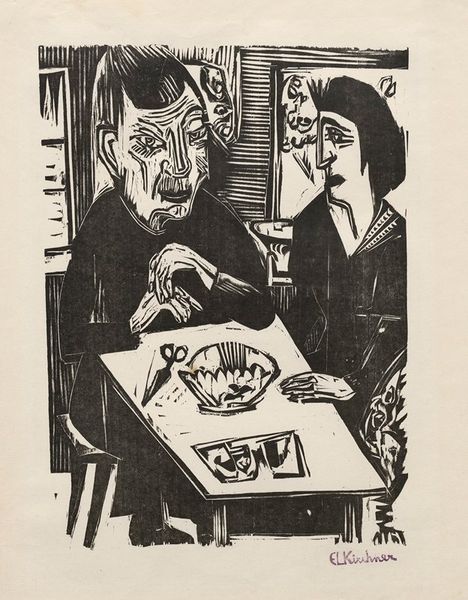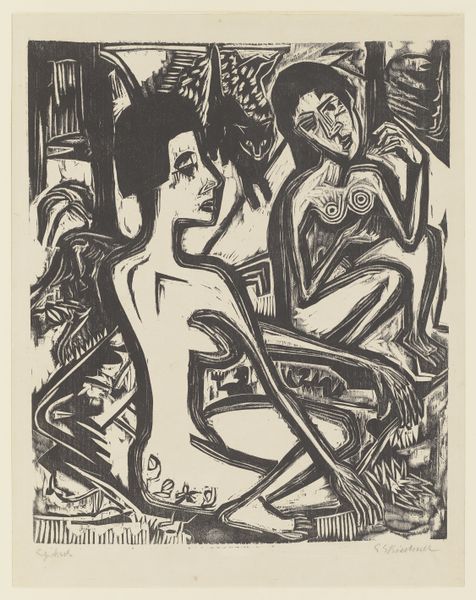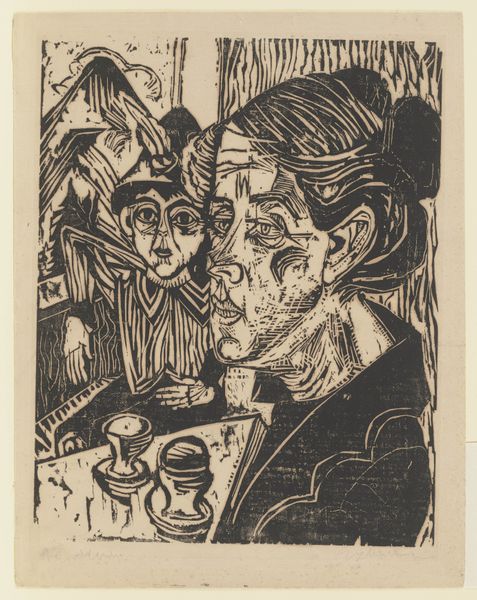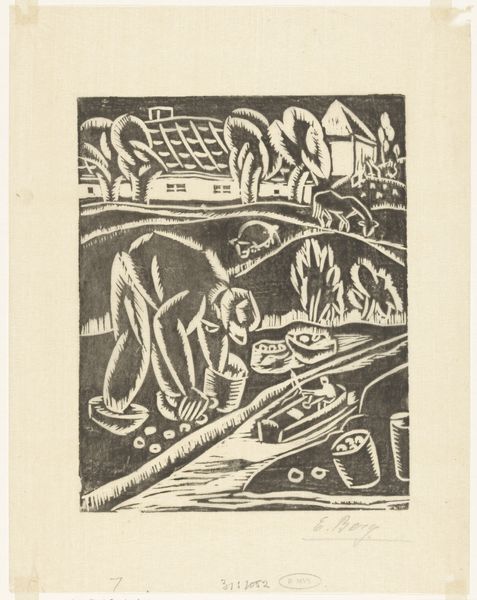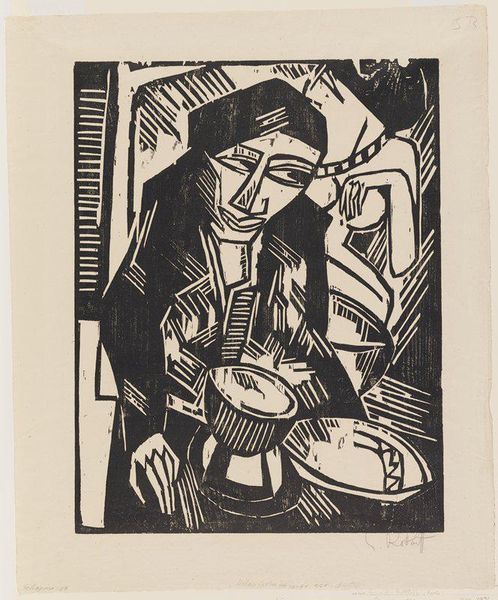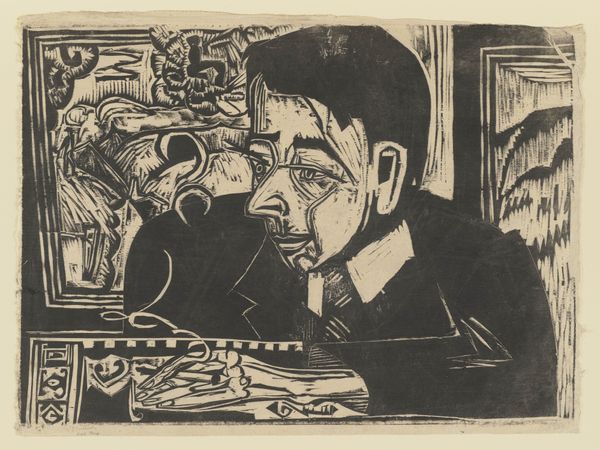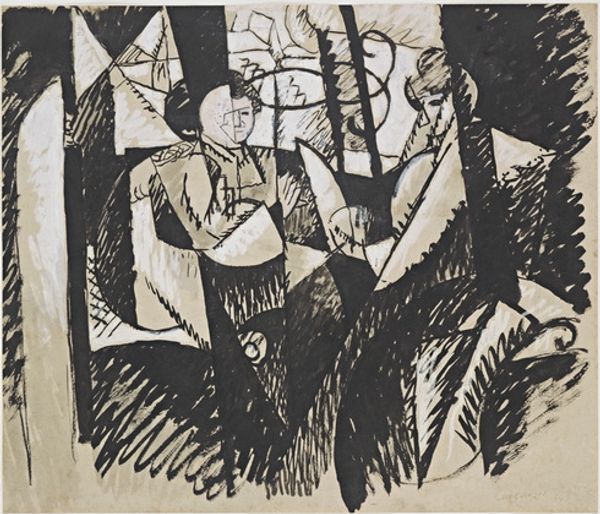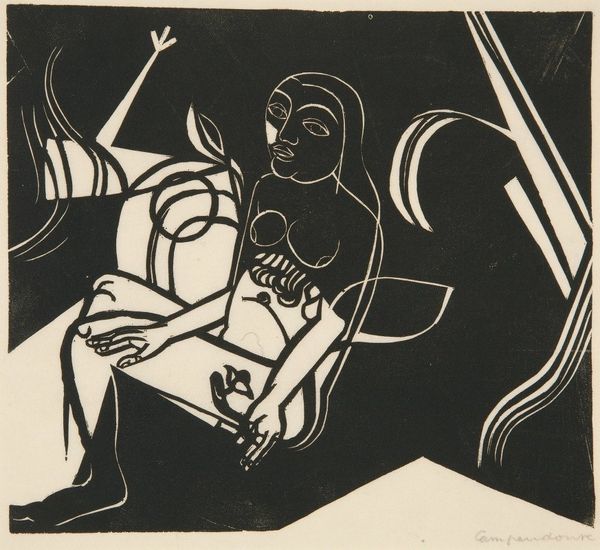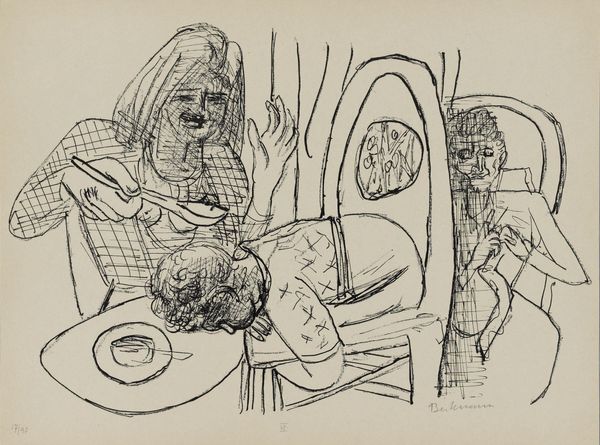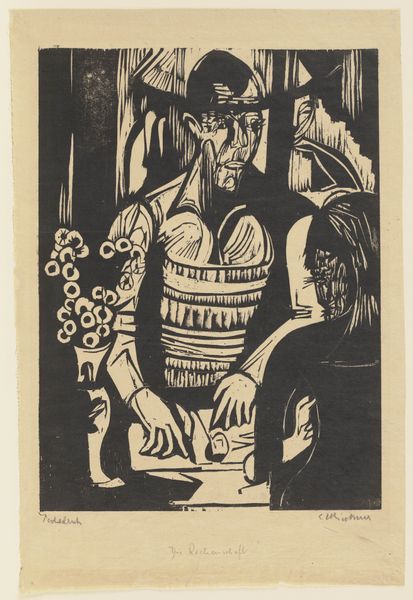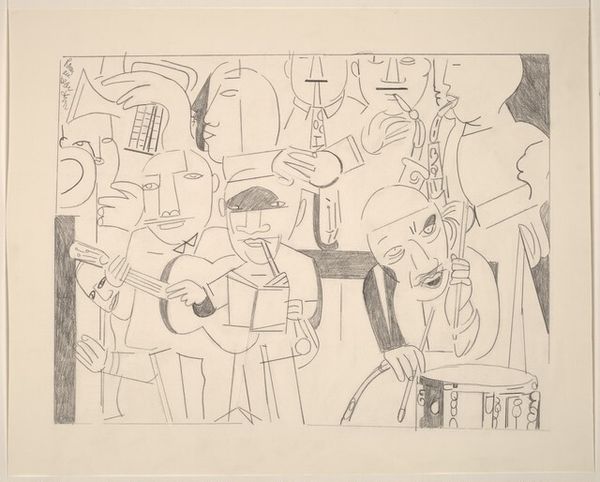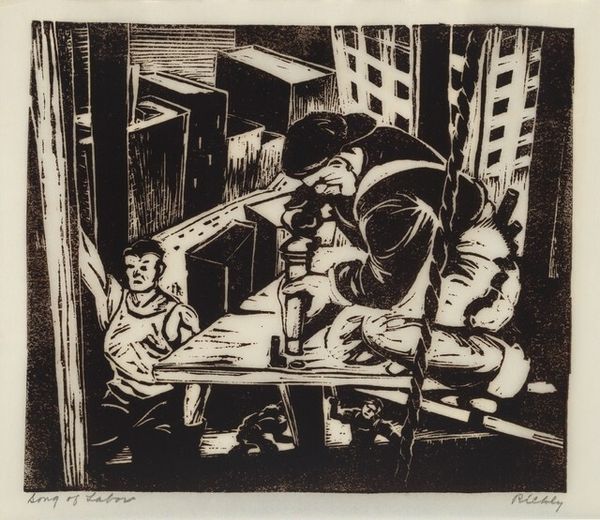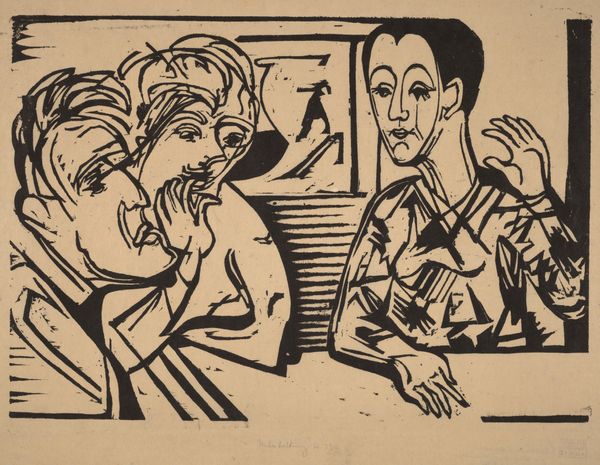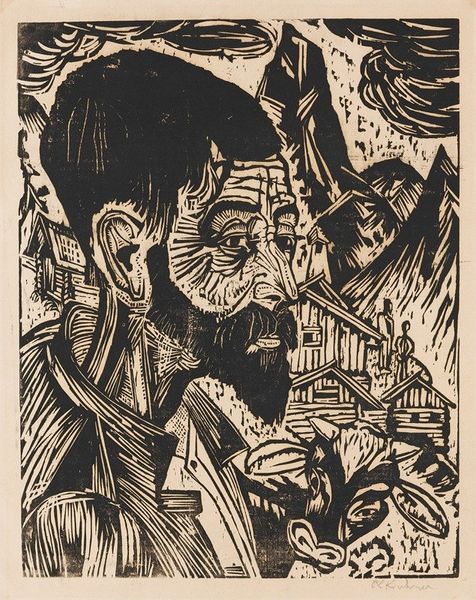
print, woodcut
#
narrative-art
# print
#
german-expressionism
#
figuration
#
expressionism
#
woodcut
Copyright: Public Domain
Curator: Let's turn our attention now to Ernst Ludwig Kirchner's "Arbeit am runden Tisch," or "Work at the Round Table," a woodcut he created in 1923, currently residing here at the Städel Museum. What strikes you about it initially? Editor: The stark contrast is really arresting. The black and white woodcut gives a feeling of immediate tension and almost a sense of claustrophobia, despite its size. The figures seem trapped in the composition. Curator: Kirchner produced this work during a particularly difficult period of his life, grappling with health issues and the aftershocks of World War I on German society. That atmosphere profoundly impacted his art. Editor: Yes, I see that. There’s a pervading anxiety conveyed through the sharp angles and the intense focus on the figures. This isn't a round table of convivial discussion, is it? More like a space of strained interaction, perhaps even reflecting the fraught politics of the time. Look at how little space there is! The figures appear enclosed. Curator: Exactly. German Expressionism, particularly in Kirchner’s hands, was deeply concerned with portraying the psychological impact of modernity and war. He channeled that turmoil directly into the faces and postures of his subjects, employing deliberate distortion to heighten the emotional intensity. It challenges our expected notions of art's role by forcing us to question socio-political tensions that underpin human existence. Editor: The choice of the woodcut medium is important too, right? The raw, graphic nature mirrors the fragmented and unsettling experiences he was trying to depict. Also, the prominence of the black cat, placed high in the image, suggests a commentary on superstition or the unknown forces at play within the scene. This adds a layer of mysticism to an otherwise tense interaction between those sat around the round table. Curator: I agree, the medium very much reflects his message. Furthermore, note how the domestic scene gets abstracted. There is so much tension contained within the supposed everyday nature of domesticity. It emphasizes how expressionism could use the everyday to hint at society’s dark truths. Editor: Examining Kirchner's "Arbeit am runden Tisch" encourages us to consider the impact of historical trauma and the role art can play in processing and communicating such experiences. Curator: Indeed, a potent reminder of art's capacity to engage with and critique the social and political realities of its time.
Comments
No comments
Be the first to comment and join the conversation on the ultimate creative platform.
